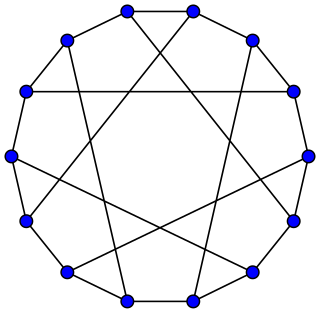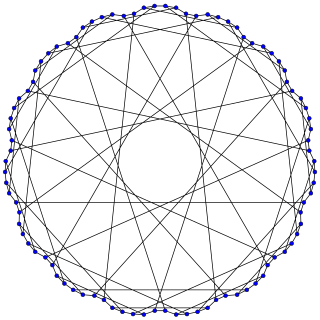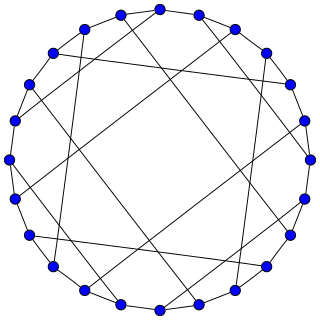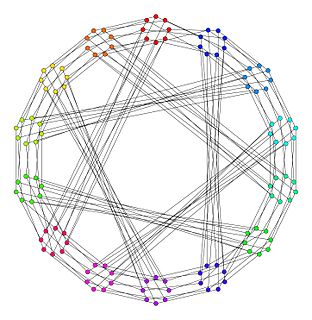| F26A graph | |
|---|---|
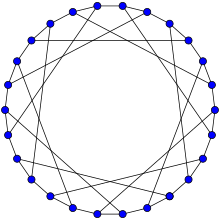 The F26A graph is Hamiltonian. | |
| Vertices | 26 |
| Edges | 39 |
| Radius | 5 |
| Diameter | 5 |
| Girth | 6 |
| Automorphisms | 78 (C13⋊C6) |
| Chromatic number | 2 |
| Chromatic index | 3 |
| Properties | Cayley graph Symmetric Cubic Hamiltonian [1] |
| Table of graphs and parameters | |
In the mathematical field of graph theory, the F26A graph is a symmetric bipartite cubic graph with 26 vertices and 39 edges. [1]

Mathematics includes the study of such topics as quantity, structure (algebra), space (geometry), and change. It has no generally accepted definition.

In mathematics, graph theory is the study of graphs, which are mathematical structures used to model pairwise relations between objects. A graph in this context is made up of vertices which are connected by edges. A distinction is made between undirected graphs, where edges link two vertices symmetrically, and directed graphs, where edges link two vertices asymmetrically; see Graph for more detailed definitions and for other variations in the types of graph that are commonly considered. Graphs are one of the prime objects of study in discrete mathematics.

In the mathematical field of graph theory, a graph G is symmetric if, given any two pairs of adjacent vertices u1—v1 and u2—v2 of G, there is an automorphism
Contents
It has chromatic number 2, chromatic index 3, diameter 5, radius 5 and girth 6. [2] It is also a 3-vertex-connected and 3-edge-connected graph.
In graph theory, the girth of a graph is the length of a shortest cycle contained in the graph. If the graph does not contain any cycles, its girth is defined to be infinity. For example, a 4-cycle (square) has girth 4. A grid has girth 4 as well, and a triangular mesh has girth 3. A graph with girth four or more is triangle-free.
In graph theory, a connected graph G is said to be k-vertex-connected if it has more than k vertices and remains connected whenever fewer than k vertices are removed.
In graph theory, a connected graph is k-edge-connected if it remains connected whenever fewer than k edges are removed.
The F26A graph is Hamiltonian and can be described by the LCF notation [−7, 7]13.

In combinatorial mathematics, LCF notation or LCF code is a notation devised by Joshua Lederberg, and extended by H. S. M. Coxeter and Robert Frucht, for the representation of cubic graphs that contain a Hamiltonian cycle. The cycle itself includes two out of the three adjacencies for each vertex, and the LCF notation specifies how far along the cycle each vertex's third neighbor is. A single graph may have multiple different representations in LCF notation.








